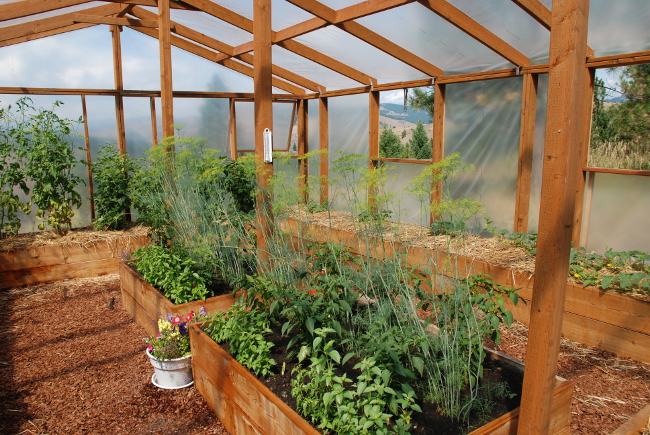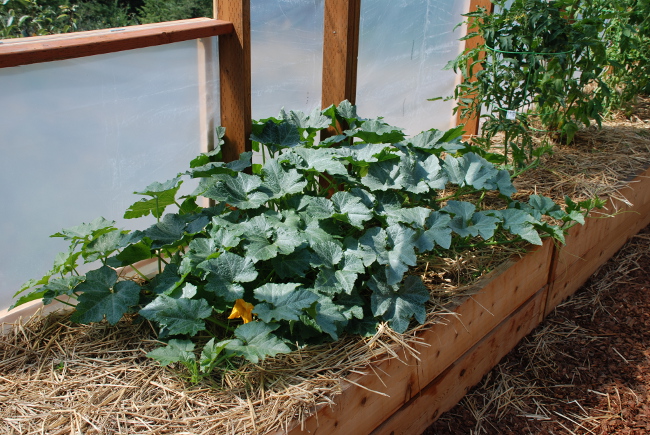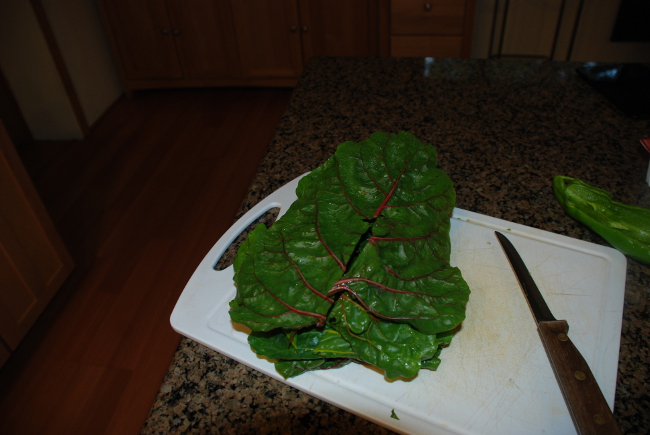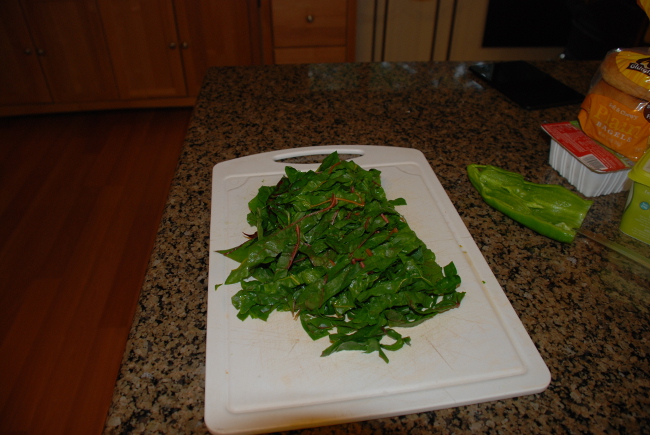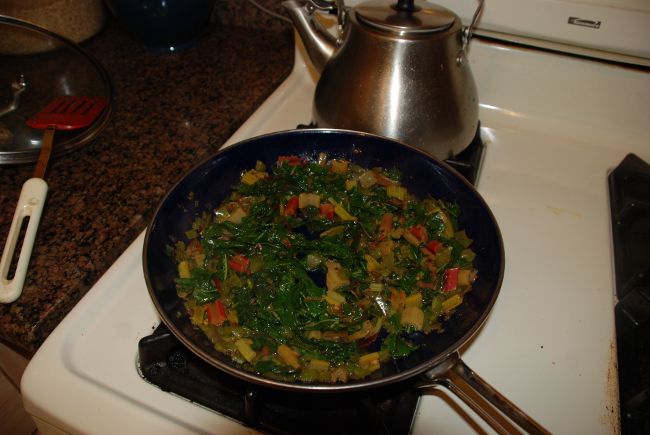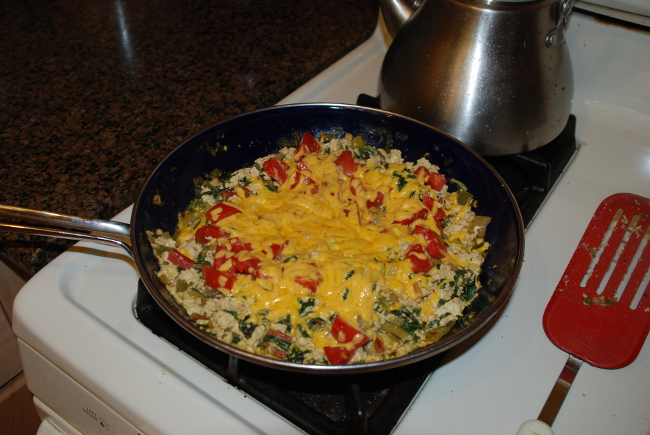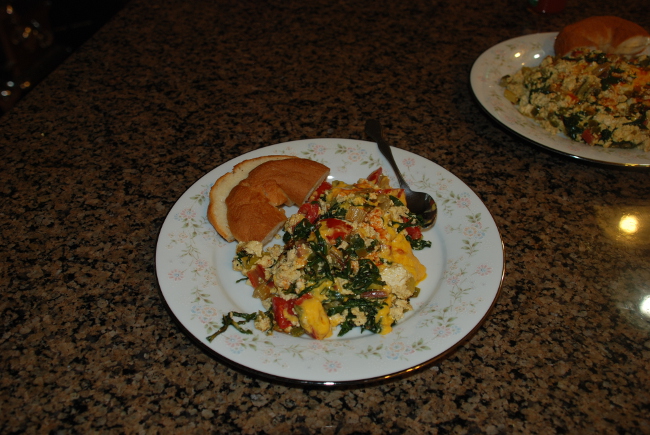The plants are growing well, now that the sun angle is down and the temperatures don’t get too hot inside the greenhouse. The wild grass all around us is turning brown, and some bushes and plants are starting to show fall colors. Won’t be long now! My favorite season is coming up.
A couple of nights ago we were awakened around 2am by dry lightning all around us, far enough away we couldn’t hardly hear thunder, just saw the light show. Yesterday evening there was a lightning strike very close to our house (within a couple of seconds at most between the flash and then boom), but then it poured heavy rain for a while, so we’re assuming all is well. Still, with dry grass it’s disconcerting to see any dry lightning storms at all. We’ll be so glad when it starts raining more frequently.
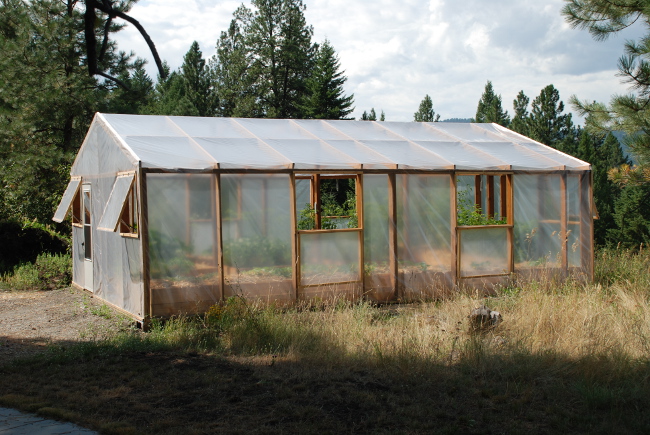
Dan put in four more opening windows, for a total of eight windows, and even so it was too hot some days. Next year we will need a shade cover.
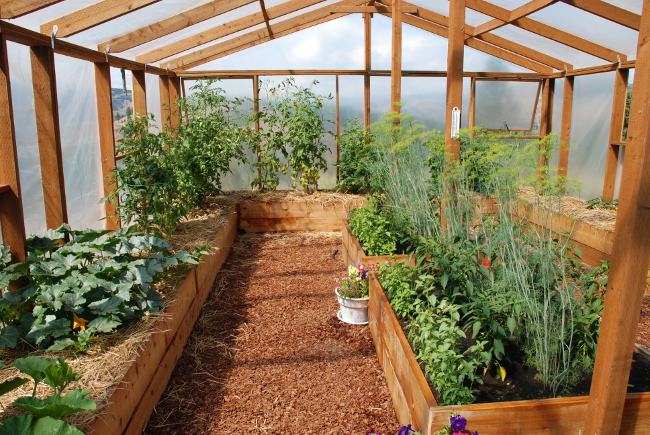
On the right hand side is a row of basil plants, then pepper plants, and in the middle a row of dill plants. On the left are the two squash plants.
The back wall is tomato plants and they are so tall now. A couple of them are trying to make a break for it, out the window.
The jalapeño plants were mis-labled at the store (supposed to be bell peppers), but that’s ok. I will make my first ever batch of pickled jalapeño slices for use on nachos this coming winter. I’ve been dicing them up, fresh, to put in our breakfast scramble, and they are delicious. So it was a happy accident that we planted some of this variety of pepper and they will always be on our list to grow, from now on.
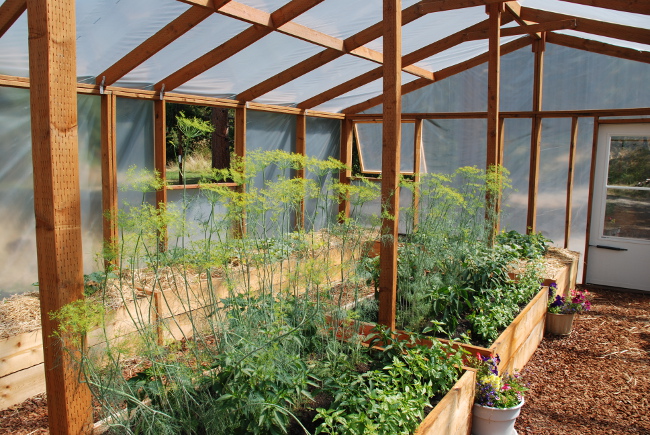
The dill plants are forming really pretty seed heads. I really wish we had some cucumbers ready for pickling.
This is not to say we don’t have any cucumbers at all, but they are tiny so far, and not very many of them. If the greenhouse extends the season for another six weeks, we’ll end up with plenty of pickled cucumbers, in the long run.
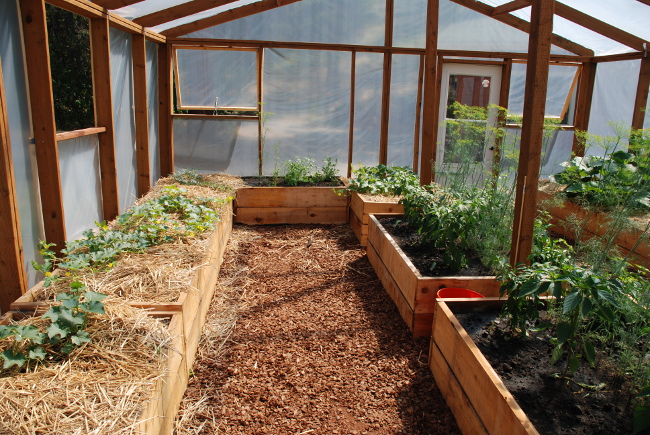
The melon plants all have set fruit, but it's still so tiny you can't see them on the plants unless you look very closely.
At the end of the row is my nascent herb garden. The plants are almost big enough (some of them), that I can harvest some for cooking. Next year the perennial herbs will have a good head start and get into gear.
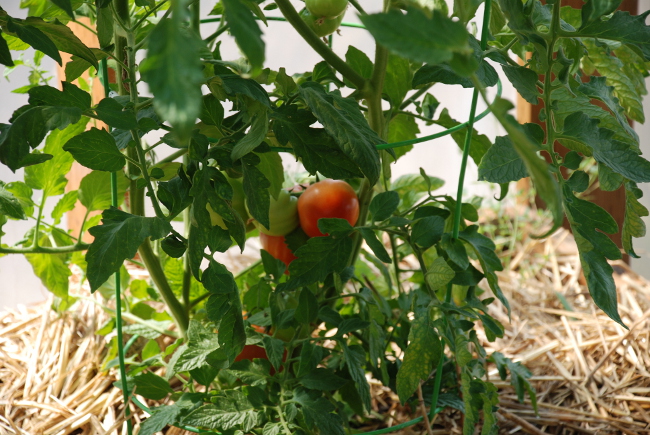
A couple of the eating tomatoes are starting to show color. We will be able to pick these in a few more days.
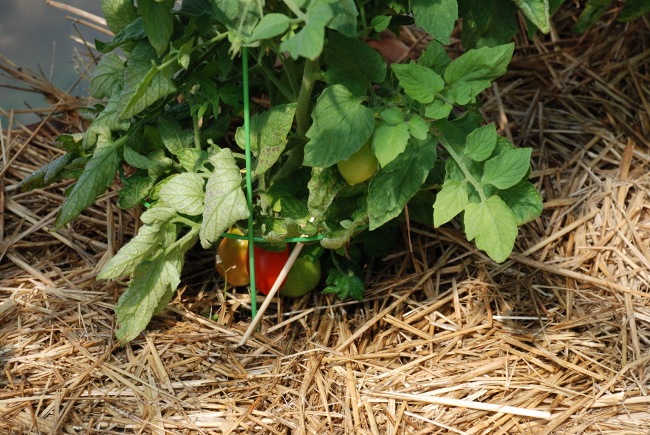
We've been picking Roma tomatoes for over a week now, and adding them to whatever I'm cooking that day. They are so delicious!
The straw we put around all the plants helps to keep moisture in the beds where the plants can use it, and has seriously cut down on the number of weeds in the greenhouse.
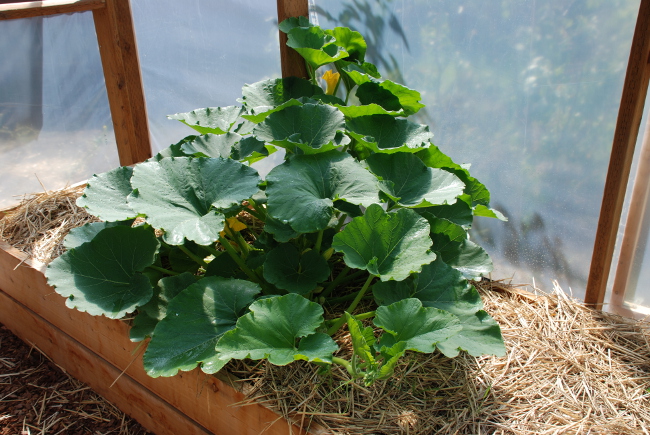
This is a butternut squash plant; it has three or four fruits hiding inside the middle of the plant. They are still small, but starting to grow larger. It will be nip and tuck, whether or not they will have enough time to ripen. Regardless, it's a pretty plant.
Again, if the greenhouse will protect the plants from the first killing frost, we should have enough time for the squash to ripen. It will need to protect the plants from temperatures under 27F outside, but if it will, then we should have a growing season through the end of September and that will be very exciting!
Tofu Scramble recipe
First chop up 1/2 cup of onions, and one cup of peppers (I use a combination of green bell peppers, red bell peppers, anaheim peppers, and a hot pepper). Add the chopped stems from swiss chard (roughly a cup of chopped stems). Saute them in a couple of tablespoons of olive oil, over low heat, with salt and pepper, and 1/4 teaspoon Chipotle chili flakes, for 10 minutes, until the vegetables are soft.
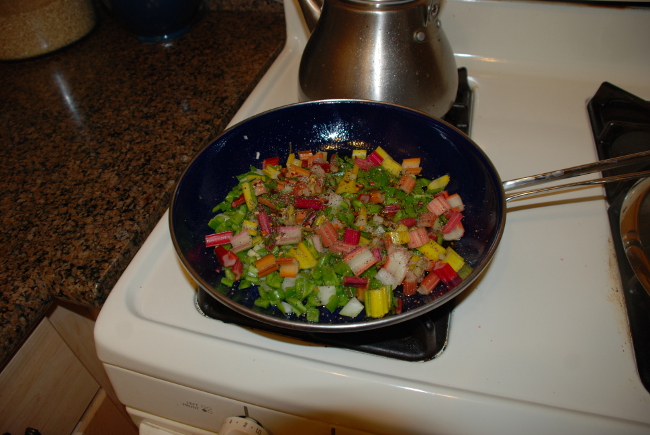
These chopped vegetables are almost ready for the next step. The swiss chard stems are so pretty, add a splash of color to the scramble, plus great vitamins and minerals.
As soon as the chopped vegetables are fairly soft, I add the strips of swiss chard leaves, and pop a lid on the pan to steam the leaves. This takes about 5-10 minutes. Stir them around occasionally.
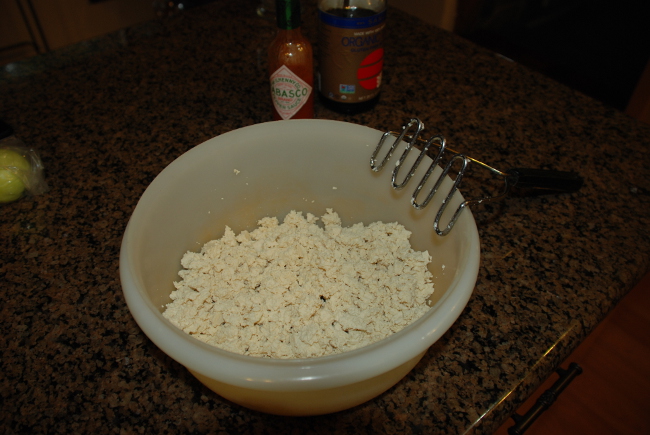
Extra firm tofu, which has been wrapped in paper towels and extra moisture removed, then crumbled up using a potato masher.
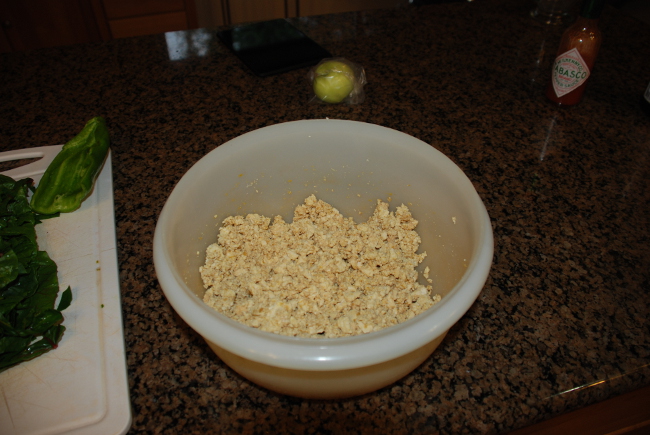
I add a couple of tablespoons of gluten free soy sauce, and two tablespoons of nutritional yeast, and stir it all together. Then it is set aside to wait for the vegetables to finish cooking.
Once the swiss chard leaves are cooked, but still bright green, the tofu mixture is added.
Add the tofu mixture, stir well. Cover the pan again and cook, stirring occasionally (every few minutes), until the tofu is heated through. This takes another ten minutes. Then add a couple of chopped fresh tomatoes (a half cup, roughly, if the tomatoes are small), and some cheddar cheese.
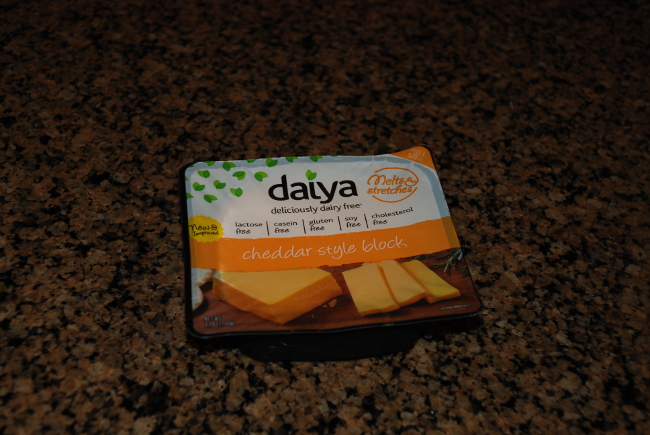
This is the best non-dairy cheddar cheese substitute I've found. It even works wonderfully for macaroni & cheese.
This is a great breakfast, and it re-heats really well so don’t worry about leftovers. You can add some fried potatoes to the scramble, and leave out the swiss chard and Chipotle pepper flakes, and substitute smoked paprika for the spicing, for an entirely different taste.
We have this for breakfast several times a week, and we haven’t gotten tired of it yet.
